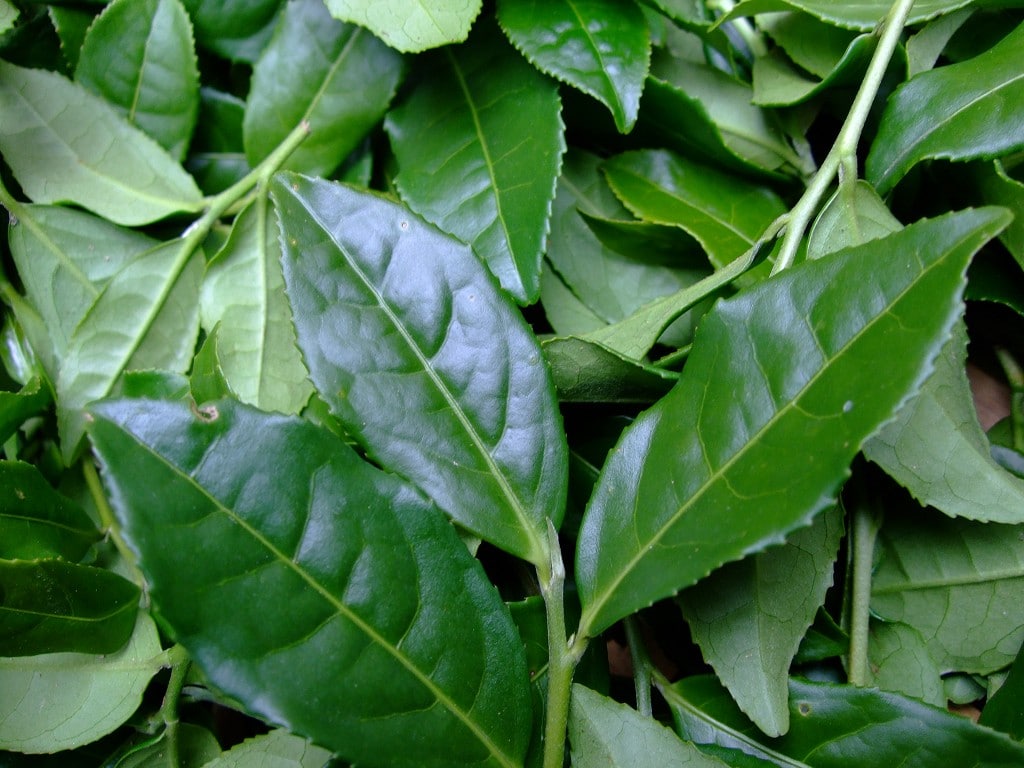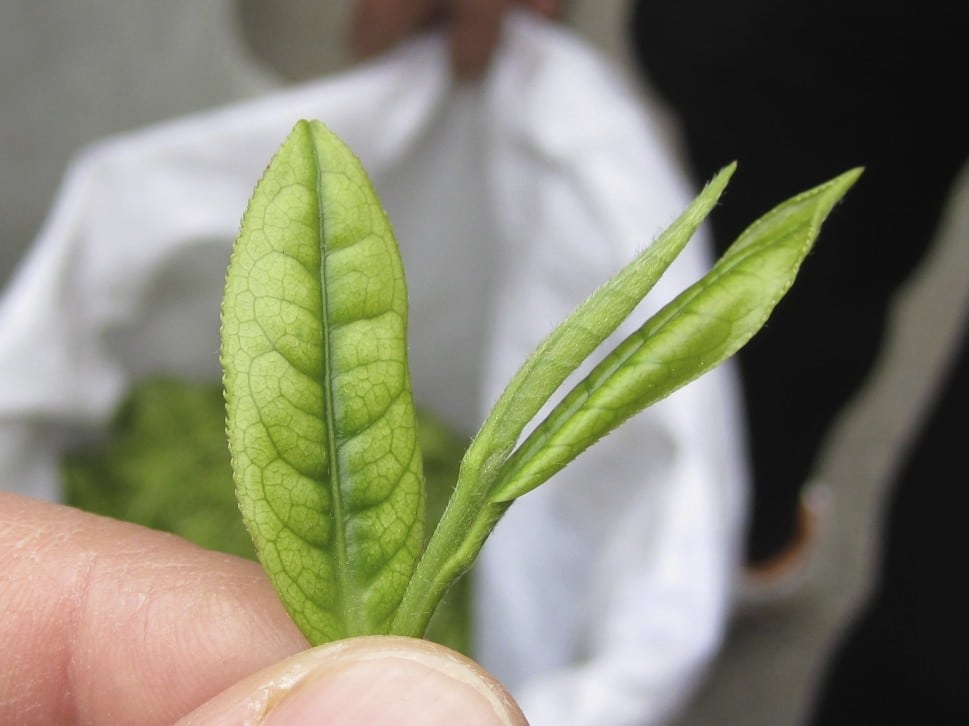Plucking and Leaf Uniformity as a Standard of Tea
This post is part of a continuing series of writings by Seven Cups founder, Austin Hodge, for the International Specialty Tea Association. The aim of this series is to detail twelve elements that can be used to authenticate and value specialty tea. The previous post, on how the condition of the tea leaf can impact the quality of tea, can be found here.
Element #2 — Adherence to Plucking Standard
Tea production starts with plucking. Plucking requires a defined bud leaf configuration called a plucking standard. The first step in making a quality tea requires adherence to the plucking standard. The plucking standard that most people are familiar with is two leaves and a bud; the original plucking standard for quality green tea going back to at least the Tang dynasty. There are many other picking standards to suit the processing demands of different styles of tea.
Quality plucking is a skilled process. It requires good hand and eye coordination, dexterity, accuracy, focus, and speed. There are tens of thousands of pluckings per kilogram of finished tea. To gain an appreciation for this, one should consider how many tasks you have done tens of thousands of times. Moreover, hand-plucking operations often commence early in the morning, in cloudy conditions, and in poor light.
The ideal leaf for green tea, again, going back to the Tang Dynasty, is the first growth of the spring. Tea grows quickly in the sunlight. As the leaf grows, the concentration of amino acids and tea polyphenols get spread over a wider area in the developing leaves. The space of millimeters in a leaf’s size can change the character of the final tea. Larger leaves can also be considered quality tea. Tai Ping Hou Kui, Liu An Gua Pian, are two notable examples. In these cases, picking a shorter leaf would cause them to be outside of their defined characteristic. Good plucking technique attunes to the biology tea plant – plucking indeed requires a “pluck” motion rather than a cut, for this reason. Breaking the cell walls of the stem with a snap influences the flavor of the leaf more favorably than cutting, due to the chemical reactions created in the leaf in response to predators.

Knowing the plucking standard of a particular tea is essential to establishing its value. The pluck maybe a single bud, or one bud and a single leaf for green teas, yellow and white teas, and black and puer teas. The picking standard for a wulong is a radical departure from green tea, black tea, and white tea. A wulong plucking is not possible until a new sprig has ended its new growth. The Chinese refer to this point as the ya zhu; Indian tea makers call this the bhanji stage of growth. In the case of wulong tea, plucking standard can include up to four or five leaves. This plucking standard is regarded as inferior when used for the production of green tea or black tea. Likewise, tea that is picked two leaves and a bud, cannot rightly be called a wulong – young tips lack the necessary flavor chemistry and durability. In this way, time at which a tea leaf is plucked determines its fate all they way to your cup.
Experienced tea professionals determine adherence to the plucking standard by examining the brewed leaves. For example, Long Jing green tea, Silver Needle white tea, Golden Bud Dian Hong, and Taiwan wulongs that have not been de-stemmed are all expected to show consistent leaf configurations. In this, we see the intersection of this standard with the next – uniformity of leaf in the finished tea.
Element #3 — Uniformity of the leaf
A quality tea should have leaves of uniform length because this guarantees a consistency of character. Uniformity of leaves in a final batch of tea not only depends on skilled adherence to the plucking standard but also good garden management. Tea grows fast and irregularly throughout the garden. An experienced garden manager knows where to send pickers and when to reschedule them to get the same pluck again. The task of plucking is complicated. There are acres of bushes and narrow picking windows to meet a certain standard. Of course, even with all of this care, there will still be addressing differences requires excellent sorting of the processed leaves. Sorting by hand is necessary for the best teas. Even though machines can accomplish good sorting, there is still a level of detail that is only possible with skilled hand-sorters.
Excellent tea requires skilled workers throughout the tea making process. A skilled team of artisans will always make better tea than machines. It is reasonable to may a much higher price for the work of these people that take tea making quality to its highest potential. And it starts in the garden, almost always with remarkable women.

